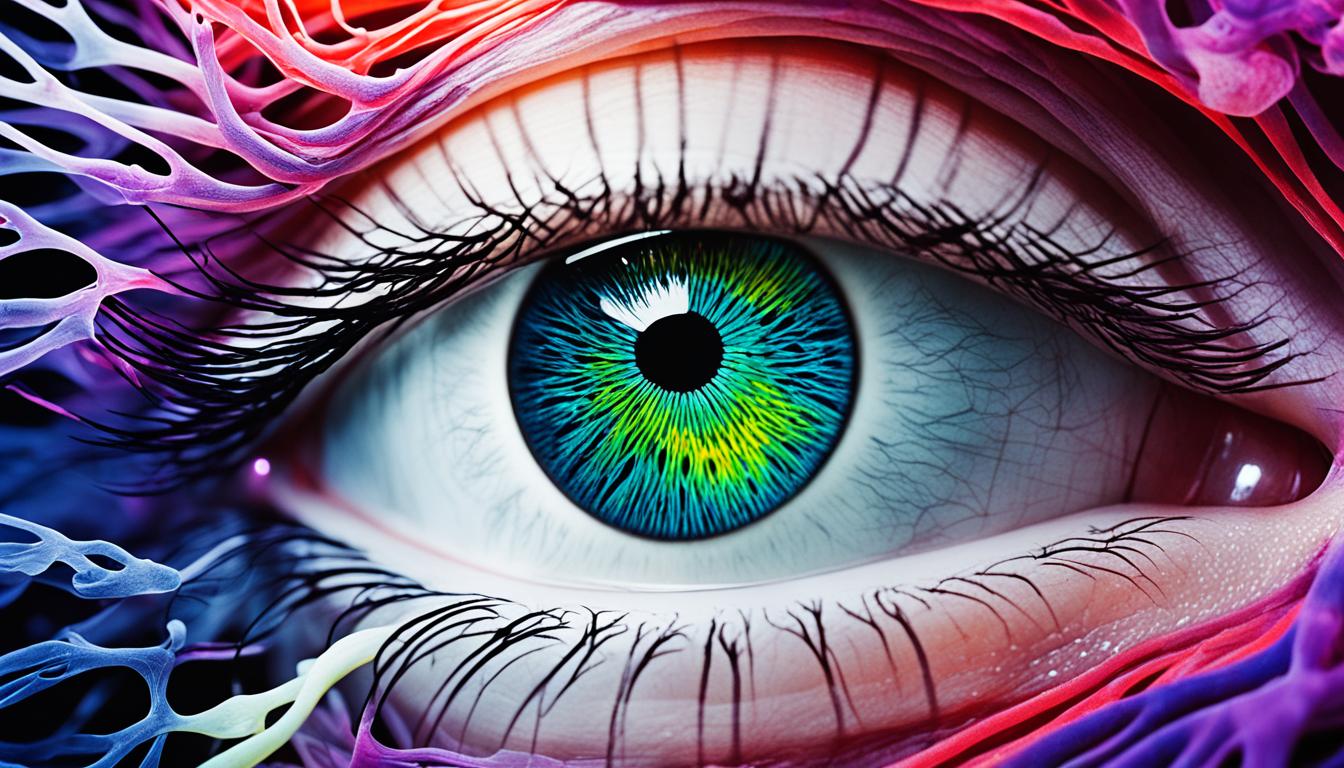Devic’s disease, or NMO, is a condition where the immune system attacks the nervous system. It mainly affects the optic nerves and the spinal cord.
People with Devic’s disease may experience symptoms like optic neuritis and myelitis. Optic neuritis can cause vision loss or blindness. Myelitis leads to paralysis and affects bladder and bowel control.
The cause of Devic’s disease is not fully understood. It’s thought to be related to a faulty immune system. This immune system issue damages the cells in our central nervous system.
Diagnosing Devic’s disease can be tricky because it looks similar to MS. Yet, Devic’s often has more severe optic neuritis and myelitis. A key way to diagnose Devic’s is to check for aquaporin-4 antibodies in the blood.
Key Takeaways:
- Devic’s disease is an autoimmune disorder affecting the central nervous system.
- The main symptoms include optic neuritis and myelitis.
- Aquaporin-4 antibodies in the blood are used as a diagnostic marker.
- Stem cell therapy shows promise in regenerating damaged cells and improving vision and mobility.
- Early diagnosis and treatment are essential for managing Devic’s disease effectively.
Symptoms of Devic’s Disease
Devic’s disease has two main symptoms: optic neuritis and myelitis.
Optic Neuritis
Optic neuritis is when the optic nerve is inflamed. This nerve connects the eye to the brain. It can cause pain behind the eye, blurry vision, and problems seeing in dim light. Sometimes, it leads to partial or full vision loss. People with Devic’s may find it hard to see colors clearly or tell the difference between shades.
Myelitis
Myelitis happens when the spinal cord gets inflamed. It can cause muscle weakness and even paralysis. People with Devic’s may feel numb, tingle, or burn in their arms or legs. Myelitis also leads to spasticity, where moving becomes hard, and it often comes with pain.
It doesn’t stop there. Myelitis can mess up how the bladder and bowels work, leading to incontinence. It also causes issues with sexual function due to nerve signal problems in the spinal cord.
Other Brain Involvement
Devic’s disease might also affect other parts of the brain, like the brainstem or hypothalamus. This can cause uncontrollable hiccups, itchiness, feelings of sickness, hearing loss, seeing double, facial paralysis, and dizzy spells. It also makes keeping balance and coordination hard.
Doctors look for these symptoms when they suspect Devic’s disease. Identifying optic neuritis, myelitis, and brain symptoms helps diagnose it and start the right treatment.
Causes and Epidemiology of Devic’s Disease
Devic’s disease is when the immune system wrongly attacks the body. It targets cells in the central nervous system that have aquaporin-4 proteins. Over 80% of Devic’s disease cases show aquaporin-4 antibodies in the blood.
Scientists think gene-related factors might make some people more likely to get Devic’s disease. But, the specific genes involved are still a mystery. Figuring this out could lead to more personalized treatments in the future.
Devic’s disease affects people worldwide but is more common in those of Asian and African descent. The number of cases is between 1 to 10 per 100,000 people. This shows ethnicity might play a role in its development.
Generally, women are more affected by Devic’s, but it can happen to anyone, even kids. Symptoms vary in each person, showing how complex this disease is.
Conclusion
Devic’s disease, or neuromyelitis optica, is a harmful autoimmune disorder. It affects the central nervous system, including the optic nerves and spinal cord. This disease can cause vision loss or blindness and paralysis.
The main cause of Devic’s is not yet known. But, it’s thought to be due to the immune system attacking the body by mistake. Researchers focus on aquaporin-4 antibodies and possible genetic links to better understand and treat the illness.
Stem cell therapy offers hope for individuals with Devic’s disease. This treatment helps repair the damage in the nervous system. It may improve vision and the ability to move for those living with the disease.

